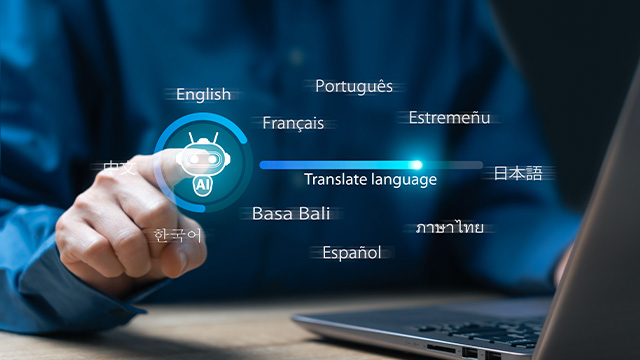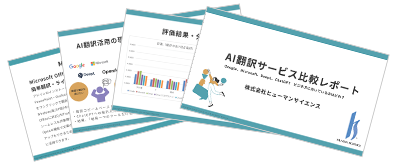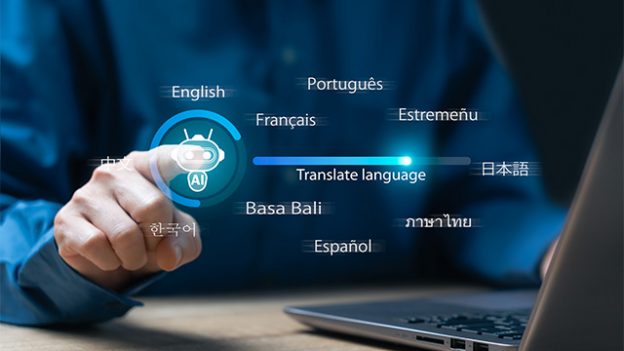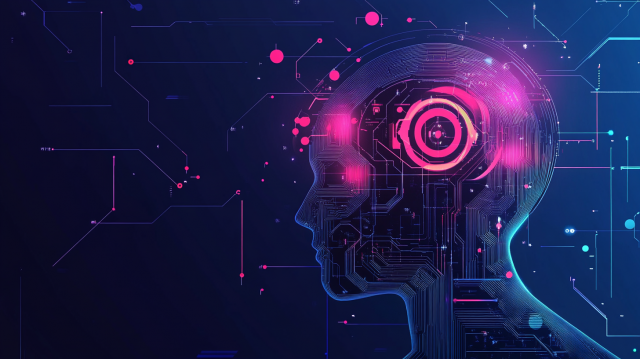
- Table of Contents

1. What is AI Translation (Machine Translation)?

AI translation is a system that utilizes AI (artificial intelligence) technology to automatically translate from one language to another. Traditionally referred to as automatic translation or machine translation, the term AI translation has become more common in recent years due to advancements and applications of AI technology. The core of this technology lies in "neural networks" and "deep learning," which have significantly improved translation accuracy. Nowadays, AI translation services such as Google Translate, DeepL, and ChatGPT are widely used in business and everyday life.
2. The Mechanism of AI Translation (Machine Translation)

There are mainly three methods of AI translation (machine translation): rule-based machine translation, statistical machine translation, and neural machine translation.
In rule-based translation methods, humans need to create translation rules based on dictionaries and grammar, and this process is complex and difficult to update. Additionally, this method had low translation accuracy and could only translate formulaic sentences.
On the other hand, in statistical machine translation, computers learn rules. By reading a large number of pairs of original texts and their translations (e.g., 1 million sentences), they learn the correspondence between words and phrases in the original text and the translation from the data (corpus), making it relatively easy to handle new phrases. However, translation between languages with different grammar, such as English and Japanese, is difficult, and the translation accuracy was not practical.
In addition, there are hybrid translation methods that combine rule-based and statistical machine translation, as well as example-based translation techniques that extract similar parts from existing source and translated text pairs to utilize in translation. These methods have improved translation accuracy compared to traditional rule-based machine translation.
Neural translation, like statistical machine translation, learns by ingesting a large number of pairs of original texts and their translations. However, by using neural networks and deep learning, which are types of machine learning, it can utilize more information for translation. As a result, translation accuracy has significantly improved, allowing for more natural and fluent translations. The emergence of neural machine translation has brought attention to machine translation, which is now widely used in daily life and work.
For details on these translation methods, please see the page below.
How Machine Translation Works - Literal Translation, Free Translation, and Neural Translation?
3. Benefits of Utilizing AI Translation (Machine Translation)

The latest translation systems utilizing AI technology have made it possible to achieve significantly higher quality translations compared to traditional machine translation. In particular, translation engines that leverage neural networks can understand context and generate more natural translations. Additionally, a major benefit is the substantial reduction in the time required for translation tasks. Large volumes of documents that would take several days to translate manually can be completed in just a few minutes using AI translation.
Furthermore, reducing the costs associated with translation services is an undeniable benefit. Compared to traditional translation companies, AI translation can be utilized at an overwhelmingly lower cost. Additionally, many AI translation services support over 100 languages, helping to lower the language barriers in global business. For example, it can be used in various situations such as multilingual website localization, manual translation, and business communication with overseas partners.
However, it is important to understand that AI translation has its limitations. In particular, translations of documents that require a high level of expertise and accuracy, such as legal documents and contracts, need to be checked and revised by professionals. AI translation should not completely replace human translators, but rather be used as a tool to enhance and support the translation process.
One of the disadvantages of machine translation is the issue of accuracy. In particular, for texts that strongly depend on context, mistranslations are more likely to occur. Therefore, it is not recommended to use machine-translated documents as they are, and human verification is essential. It is especially advisable to outsource important documents and contracts to a specialized translation company.
4. How to Utilize AI Translation

Using AI translation can streamline the translation of documents and materials in business settings. For example, it can be utilized for translating various documents such as contracts, proposals, manuals, and presentation materials. It is particularly effective when there is a need to translate a large volume of documents in a short time or for translating standardized documents. Additionally, it can significantly reduce the working time when used by translators as a preliminary translation.
Communication with foreign guests is widely utilized, particularly in the tourism and railway industries. For example, it is invaluable in situations requiring real-time interpretation, such as customer service at hotel front desks, explanations at tourist information centers, and guidance at train stations. By using smartphones and tablets, conversations can be translated instantly, enabling smooth communication that transcends language barriers.
In internal and external business global communication, it plays an important role in international business development. In web meetings such as discussions with overseas offices and webinars in foreign languages, it is possible to translate and subtitle audio in real-time. It is also effective for email exchanges with overseas partners and the multilingualization of internal documents. This reduces language barriers in global business and enables smooth communication.
[Related Links]
How to streamline translation work? Introducing the advantages and disadvantages of typical tools
[Updated for 2025!] 5 AI Translation Tools - A Comparison of Features!
5. AI Translation Security

Depending on the AI translation service, the data you input may be reused for service improvement and incorporated into the translation engine. As a result, there is a possibility that confidential information may be leaked to external users. As a preventive measure, please check the terms of use of the AI translation service you are using and choose services or plans that do not allow data reuse. When selecting an AI translation service for business use, carefully consider which services have high confidentiality.
【Related Links】
Confidentiality with DeepL Translations. Is It Secure?
6. Summary
AI translation (machine translation) is a system that automatically translates languages using AI technology. Particularly, advancements in neural networks and deep learning have improved accuracy, and services like Google Translate and DeepL are widely used. It helps support global business by reducing translation time and costs, as well as accommodating multiple languages; however, human verification is necessary for specialized content such as legal documents. Additionally, please be aware that using AI translation services may pose a risk of confidential information leakage.
Human Science offers an automatic translation software called "MTrans for Office" that utilizes translation engines from DeepL, Google, Microsoft, and OpenAI. OpenAI can not only translate but also generate, rewrite, and proofread text depending on the prompt, supporting business efficiency and multilingual capabilities. MTrans for Office also offers a 14-day free trial. Please feel free to contact us.

Features of MTrans for Office
- ① Unlimited number of file translations and glossary integration for a fixed fee
- ② One-click translation from Office products!
- ③ API connection ensures security
・For customers who want further enhancement, we also offer SSO, IP restrictions, and more. - ④ Support in Japanese by Japanese companies
・Support for security check sheets is also available
・Payment via bank transfer is available
MTrans for Office is an easy-to-use translation software for Office.




























